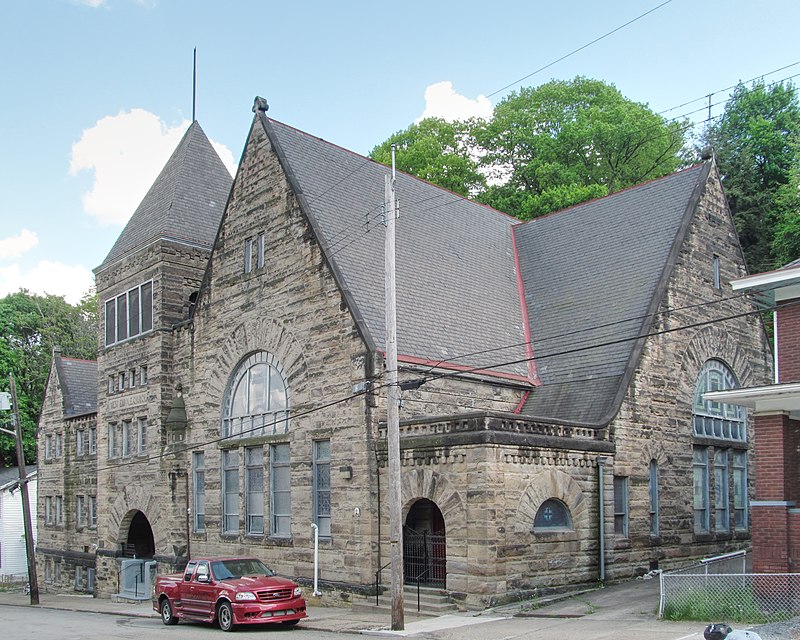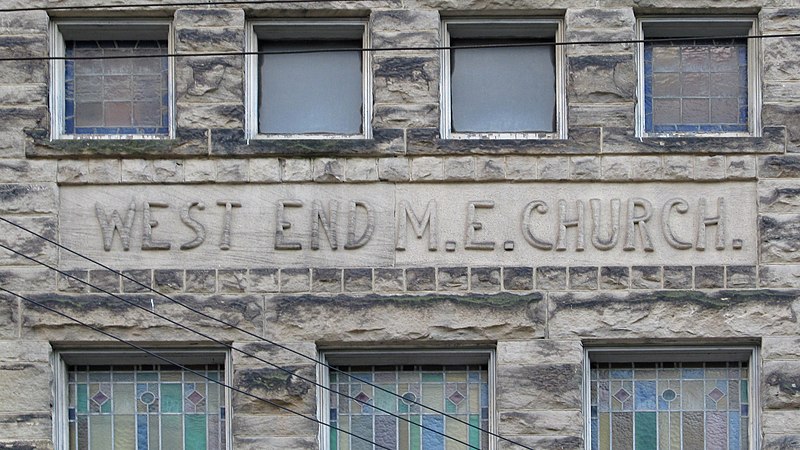
In 1888 the Allegheny County Courthouse was finished, and by then its influence in Pittsburgh had already been profound. H. H. Richardson predicted, correctly, that it would be his most famous work; he died in 1886 without seeing it completed, when the mania for “Richardsonian Romanesque” in Pittsburgh was only beginning. Fortunately several competent Romanesque architects were available to supply the buildings Richardson could no longer provide.
Although the Pittsburgh History and Landmarks Foundation plaque on the building attributes it to Frank Alden of Longfellow, Alden & Harlow, the architect was actually James P. Bailey, an accomplished designer of churches who took to the Richardsonian Romanesque style very well. The lot is difficult and unpromising, but Bailey’s design makes the irregular topography part of the romance.1

The church is vacant at the moment; it would make a fine studio for some prosperous artist.


Connoisseurs of Victorian lettering will be delighted by the inscriptions.

- This attribution has been updated. We originally accepted the PHLF attribution without question, until our correspondent David Schwing presented evidence we could not dismiss—a news story in the early stages of construction, showing Bailey’s design for the church, which is exactly as the church now stands: “A Busy Building Season,” Pittsburg Press, March 29, 1888, p. 6.
Father Pitt does not like to disappear his mistakes, so here is the paragraph he originally wrote: “Frank E. Alden was the Alden of Longfellow, Alden, and Harlow. Longfellow himself had trained with Richardson, and his firm was regarded as the successor to Richardson’s. Here Alden fills a very unpromising lot with a romantically Romanesque pile, built in 1888 while the last stones were still falling into place in the courthouse.” ↩︎
